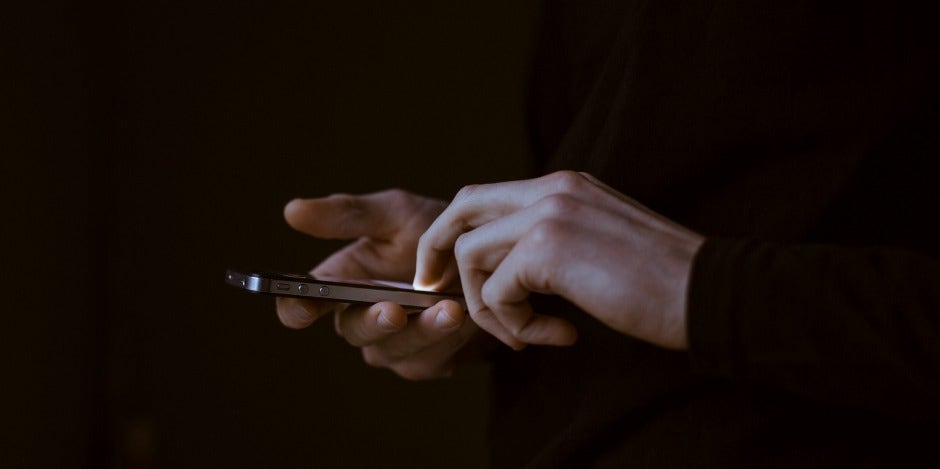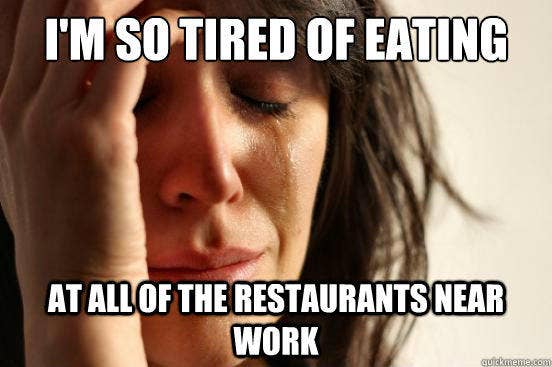Why The New Zealand Terrorist Attack Is A Wake-Up Call For Parents Of Kids Who Use Social Media
Is your child being radicalized on Instagram?
 Photo by Gilles Lambert on Unsplash
Photo by Gilles Lambert on Unsplash The massacre in New Zealand is haunting me.
Not just because at least one young white man decided to commit a massive act of terrorism against two mosques in New Zealand, killing 49 innocent people and injuring more than 20 others. That is horrifying in and of itself.
What's hitting close to home for me, as a mother of two adolescent boys, is how unsurprising this mass shooting is. This is yet another in a string of mass shootings carried out by young, white men in otherwise safe, welcoming communities.
On top of that, much of the language used in the New Zealand shooter's manifesto sounds like an angry young man who has been radicalized online. For parents who worry about how social media affects teens, this is terrifying. What if our kids are being radicalized, or taught some very troubling implicit biases, like Islamophobia, racism, or sexism?
The social media element of this mass shooting is impossible to ignore.
Early reports allege that the shooter told members of the 8Chan community (a disgusting cesspool of white male humanity at its worst) that he was going to carry out this attack. They rooted him on, posting swastikas and exclaiming that they couldn't wait to see the news afterward.
Second, the attack was livestreamed on Facebook, beginning with the murder of a Muslim man greeting the terrorist at the door of the Mosque.
Third, much of the language used by the reported shooter is familiar to anyone who has spent time on Instagram's "Search & Explore" screen looking at memes.
While there is no proof that the terrorist or terrorists who are responsible for the New Zealand mass shooting were radicalized on Instagram, this is still an opportunity for parents to wake up and pay attention to the content their adolescents and teenagers are consuming online — particularly in the form of viral memes. This is true for many platforms, as social media affects teens profoundly — regardless of whether it's Instagram, SnapChat, or TikTok.
But when it comes to viral memes, Instagram seems to be the most popular outlet for teens.
RELATED: 7 Expert Tips For Keeping Your Kids Safe Online
First, let's be clear about this: Lots of kids are using Instagram and almost none of them are going to become terrorists.
But terorrism is not the only problem in our society, and acts of mass murder are one of the least likely ways in which our children are going to harm others. But that shouldn't let parents or teens off the hook. Radicalization can happen in both minor and major ways, especially on social media sites like Instagram, where the more extreme and polarizing content tends to rise to the top of the algorithm, with Instagram doing seemingly nothing to stop it.
So how do we parent in the age of Instagram, and how old should kids be when they start using Instagram?
The user agreement says that all Instagram users have to be at least 13 years of age, but that doesn't stop most kids from creating accounts. And based upon my own experience, they do just that — oftentimes with the consent of their parents.
Allowing our kids to use Instagram isn't necessarily a bad thing. After all, social media is a necessary life skill. Our kids need to know how to navigate whatever social media services come their way — not just technically, but also socially. In essence, they need to learn social media manners.
On top of that, they also need to learn social media "street smarts".
Just like we teach our kids how to look both ways before crossing the street, we need to teach them how to stay safe online, and they need to practice it regularly. They need to know how to keep their personal information private, how to have healthy emotional boundaries, and how to avoid falling into common patterns around cyberbullying.
If you simply prevent your child from using social media, thinking talking to them about it is enough, they may struggle to keep up with the social aspects of technology, and they may even put themselves in danger.
According to a 2018 report from the Pew Research Center, 95% of teenagers now have a smartphone, which means they have access to the Internet and social media. 52% of these teens report being active users of Instagram.
As a mom of kids who use Instagram, I have found that my kids use social media very differently than I do. If you're like me, you probably look at your newsfeed first, "hearting" the photos of babies and sunsets, or you click on your friends' Stories and watch their kids' dance recitals and judo trophy award ceremonies.
But this is not how most teenagers use Instagram.
While watching over the shoulder of one of my kids as he scrolled on his phone, I realized that kids spend most of their Instagram time in the "Search & Explore" tab (the little magnifying glass at the bottom of your home screen).
So, what is the Instagram Explore screen? According to the Instagram Help page, "Posts are selected automatically based on things like the people you follow or the posts you like". In essence, Instagram decides what your kids should see and there is no real way to control what shows up in your child's Search & Explore tab — even if your kid has a private account.
My Explore screen is almost entirely made up of photos and videos of dogs, raccoons, and sugar gliders (can you blame me?!). There are tabs at the top for topics the Instagram algorithm thinks I will enjoy: Style, Animals, Decor, Comics, and Fitness. That's pretty accurate (except the fitness part, of course). But most teenagers' Explore screens are very different, full of memes, screencaps of text messages, stunts and "fails" caught on camera, and online influencers talking about things like video games or giving makeup tutorials.
But what's so bad about memes? you may ask.
Inherently, nothing.
According to Google's dictionary, a meme is, "a humorous image, video, piece of text, etc., that is copied (often with slight variations) and spread rapidly by Internet users."
Eight or so years ago, when memes became widespread for the first time, most were based on stock photos, like the image of the white woman looking distressed, known as "First World Problems". This is the type of meme most parents of teenagers remember.

Obviously, memes like this are harmless. Memes can be great at finding humor in the mundane, everyday or trivial. Sometimes memes can help debunk myths, disentangle problematic thinking, or bring empathy to a charged political situation.
But what I've seen in viral memes more recently is distressing. These memes probably always existed, I'm likely just now noticing them as the mother of a teenager.
First, sexism is rampant in Instagram memes.
Stereotypes about women are everywhere, with degrading language and images. As adults, when we see this type of offensive content, we tend to just roll our eyes and keep scrolling. But for kids, seeing words like "c*nt" "wh*re" or even the ever-present "th*t" so often on these memes normalizes thinking about women as not only less-than, but as sexual objects without value.
Here's an example that was DM'd to the teen daughter of a friend of mine:

This shows the ways in which Instagram and other social media have totally normalized the term "th*t" to simply mean "girls".
According to Urban Dictionary, it's a decidedly sexist and dehumanizing term that is the modern equivalent of "sl*t" in my day. Here's how they define it:
"What guys call girls in schools that send out nudes and porn of themselves. An acronym for That Ho Over There."
But clearly the boys who share this meme (it is a wildly popular one with different words overlayed) don't mean every girl in their hallway is sexually promiscuous — this word now just means "girls"... And that is terrifying to me.
In addition to sexism, homophobia, Islamophobic, anti-Semitism, and racism are simply everywhere on any given teen's Explore screen. Kids whose family values would never, ever allow for them to use racial slurs or to degrade gay people are now seeing memes that are devastatingly hurtful.
For instance, one meme I found was of an old photo of a white guy in a Jetsons-style time machine. The type overlay read: "Me building a time machine so I can go back in time so I can say [the N-word]."
One anti-Semitic meme read: "Jews: [nothing], Hitler: I diagnose you with Dead."
At this point, all of this seems "normal" even to the most socially-conscious of teens. They may not agree with it, but they tend to think the meme is just a joke.
So how do hate-filled memes end up in your kid's Seach & Explore screen?
All it takes is for one person they follow to like, share, or even click on the meme (or even one related to it), and suddenly it's in front of your child's face. If your kid clicks on it, likes it, or shares it (even by accident — I know that I've accidentally clicked on things while using my phone), the meme is proliferated out to all his or her friends.
The more our kids see content like this, the more normal it becomes to be sexist, anti-Semitic, Islamophobic, and more. And parents have no clue.
So, what can parents do to help prevent their kids from being radicalized into hate on Instagram and other social media?
It's tempting to simply ban social media altogether, but as I mentioned at the beginning of the article, you miss a valuable opportunity to teach your kids how to navigate this growing form of communication. You also miss the valuable opportunity to deconstruct some of this hateful content, and to help your child develop empathy in relation to it.
For instance, one of my kids showed the anti-Semitic meme I referenced above, and asked me to explain it. After I explained why an anti-Semite might find that "funny", I took the opportunity then to point out the extreme hurt that may be experienced by Jewish people when they see the Holocaust used as a punchline.
I also pointed out to him that the attempt to commit genocide against Jews is still happening, reminding him that just a few months ago, 11 people were brutally killed by a white supremacist at the Tree Of Life Synagogue here in the United States. Without Instagram and open communication, I don't know if I would've had the opportunity to invite him into that conversation.
Even more to the point, if you ban your kid from making an Instagram account, they may end up making one without you even knowing. It's not hard to hide the icon on their phones, or to log on via browser. Ask yourself this: Would you really know if your child, who has access to the Internet either via phone or computer, were hiding a secret Instagram account?
Probably not. And if you don't know they have one, there is absolutely no way to monitor it or use it as a teaching tool.
Instead, I suggest allowing your child to use Instagram, but to take time every day (for younger kids) or every week (for older kids) to look through their timeline and Search & Explore screens together. Some kids will love this, they'll enjoy showing you all their friends and looking at the videos and memes of dogs and other cute animals.
Something to pay attention to, when you're doing this, is how your child is commenting on posts and interacting via DM. Are they being polite? Are they engaging in any form of bullying — even if by accident? If you see something problematic, explain why it's inappropriate or offensive without getting mad at your child. It's likely they had no idea how or why something isn't OK.
Use this time as a teaching opportunity — not a shaming one. Remember, shame pushes otherwise healthy kids and normal behavior into dark corners. And that's not where you want your kids hanging out (literally or metaphorically).
Another option is to keep all of your child's social media passwords and logins on your phone, so you can check in via your own device at any time. To help build trust, let your child know you will be checking in on it, and that they are not to change the password or create new accounts without telling you.
One of the most comprehensive ways to monitor your child's online activity is to mirror your child's phone onto your own. One way of doing this is to share an AppleID or Google account with your child — that means that every text your kid gets will come to your phone, too, and you will have access to anything downloaded on your child's phone.
There are apps that can help keep an eye on your kids online, too. Monitoring apps like NetNanny and TeenSafe work great for some families. Just remember that if you use one of these, it should be to help teach your child good social media manners — not to stalk them or to gather "intel" about their lives in a way that will break the bond of trust between the two of you.
There are cool router devices that give you total control over your child's screen time — but only when they are inside your house. This is great for very young kids, but once your child has a phone or takes their laptop with them out and about, these tools are less useful.
Combatting things like sexism and Islamophobia (as well as other, perhaps less-obvious, hurtful forms of oppression like transphobia or ableism) in our kids starts with calling it out whenever we see it. Whether we're watching a rerun of Friends (lots and lots of opportunities to address homophobia there!), a classic movie like Gone With The Wind, or on social media, it's important to discuss and critique offensive content when we see it.
Social media offers a great opportunity to teach our kids how to spot and disarm hateful content, but we can only do that if we are paying close attention.
In a world where more and more teenagers are being radicalized online, it's well worth the effort. We know teens are affected by social media, and it's up to us, as parents, to decide if their experience is going to have a negative or positive outcome.
While it's highly unlikely that any of our children will grow up to be murderers, the greatest harm is not done to society by the very few who commit atrocities like the one in Christchurch, New Zealand — it's done by all of those who sit back and allow hate and bigotry to take over. Social media offers us, as parents, the chance to teach our kids how to be the ones who stop the horrors before they occur.
RELATED: Your Kids Should Not Be Using Social Media Until They Learn This
Joanna Schroeder is a feminist writer and media critic whose writing has appeared on sites like Time, Redbook, Cosmopolitan, BuzzFeed, Babble, Vox, and more, as well as the mother of three and an editor at YourTango. For more, follow her on Twitter.
